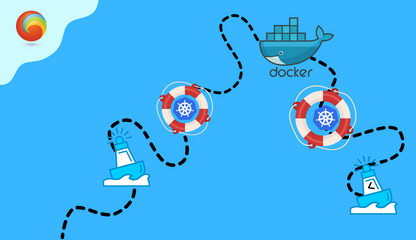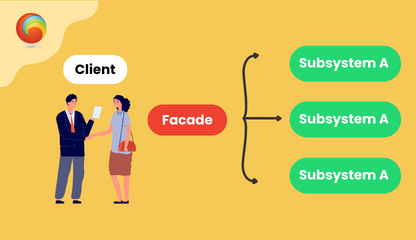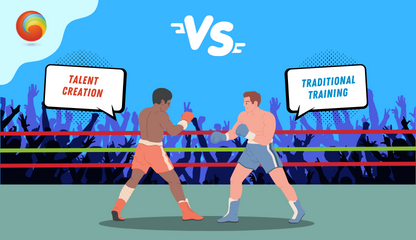Golang VS. NodeJS: Which is Better for Backend Development in 2023?
Introduction
In the landscape of backend tools, both Golang and Node.js have persevered as key contenders, shaping online realms for an extended period. Through a thorough evaluation, a spectrum of performance metrics including scalability, efficacy, concurrency, error handling, learning curve, community involvement, and others has been considered. If you currently find yourself at a crossroads, deliberating on the most suitable choice with regard to security, scalability, and maintainability, this examination strives to determine the more pertinent selection between Golang and Node.js for your projects in 2023.

Github Star in 2023 for Golang and NodeJS
What is Golang? An Overview in 2023
Golang, also known as Go, stands as a statically typed programming language with its origins rooted in Google. Initially developed out of necessity, Golang emerged as a response to the dissatisfaction of Google's development team with their existing solutions. The goal was to craft a language that amalgamated the strengths of diverse programming languages, ultimately leading to improved performance. Over time, Golang has garnered substantial acclaim.
As an open-source programming language, Golang's foundational principles draw inspiration from Python for speed and C for safety. The latest version of the language as of now is Golang 1.21.

Companies are increasingly recognizing the value of investing in Golang due to its distinct characteristics and enhancing the efficiency of the projects.[Read more about Why Companies Should Invest in Golang here. ]
Golang's versatility and efficiency are further exemplified by its adoption of Factory Design Patterns. These patterns are instrumental in enhancing code maintainability and scalability. By implementing Factory Design Patterns in Golang, companies can achieve highly organized and modular code, making it easier to manage and expand their software solutions. [Learn more about Implementing the Factory Design Pattern in Golang here. ]
Adoption and Milestones of Golang:
▪️In the Stack Overflow 2020 survey, Golang secured the 5th spot among the most favored programming languages.
▪️Golang's Goroutines, with their swift startup times compared to traditional threads, contribute to cleaner and more concise source code.
▪️According to Upwork data, Golang developers command an average hourly rate of around $44.
Advantages of Golang in 2023
🔸 Efficiency and Simplicity
🔸 Vibrant Community Support
🔸 Robust Toolset
🔸 Automated Memory Management
🔸 Forward and Backward Compatibility
🔸 Scalability at Its Core
What is NodeJS? An Overview in 2023
NodeJS stands as a dynamically typed runtime environment built on the foundation of JavaScript, capable of encompassing an entire web application development project within a singular programming language. Functioning as an open-source and cross-platform entity, NodeJS relies on Chrome's V8 JavaScript engine. Its versatility extends across multiple platforms, including Linux, Windows, and Mac. Furthermore, NodeJS offers an extensive repository of libraries that streamline the process of web application development.

Initially designed to execute JavaScript code, NodeJS has evolved into a potent tool that engenders code for both backend and frontend development, culminating in the server-side development of web applications. This evolution has firmly established NodeJS as a revolutionary and successful programming language for web application development. At Bacancy, we extend comprehensive NodeJS development services to usher evolution into your project's backend.
NodeJS Adoption and Milestones:
▪️ During 2017 and 2018, NodeJS secured the first position as the most commonly utilized language in the Tools, Frameworks, and Library category, as indicated by the Tech Overflow Survey.
▪️The incorporation of NodeJS led Netflix to experience a remarkable 70% reduction in startup time.
▪️According to W3Techs, approximately 1.5% of well-known websites employ NodeJS in their technology stack.
Advantages of NodeJS in 2023
🔸 Remarkable Performance and Efficiency
🔸 Versatile Cross-Platform Support
🔸 Inherent Scalability
🔸 Abundant Package Ecosystem
🔸 Event-driven and Asynchronous Architecture
Comparing Golang and NodeJS for Backend Development
|
Parameter |
Golang |
NodeJs |
|
Release Date |
|
|
|
Architecture Design |
|
|
|
Performance |
|
|
|
Scalability and Concurrency |
|
|
|
Documentation |
|
|
|
Coding Speed |
|
|
|
The community |
|
|
|
Security |
|
|
|
Learning Curve |
|
|
|
Development Tools |
|
|
|
Error Handling Approach |
|
|
When it comes to the realm of web development, the Golang and Node.js dichotomy has captured the attention of developers. Both technologies hold their unique appeal, making the choice between them a captivating deliberation. As we explore the comparison between Golang and Node.js, it becomes evident that personal preferences play a pivotal role in determining the optimal choice.
Golang's widespread popularity within the web development community has earned it a considerable following, often leading some to perceive it as the ultimate solution. Conversely, Node.js stands strong as a formidable contender, undeniably capable of offering a robust challenge. In the realm of Golang vs. Node.js, personal inclinations can significantly influence the decision-making process.
Choosing Between Golang and Node.js for Web Development in 2023
After delving into the intricacies of both Golang and Node.js, the decision-making process becomes multi-faceted. Both technologies have seen significant growth, adding to the complexity of the choice. Let's further explore the factors to consider when deciding between Golang and Node.js for web development in 2023. Choose the correct Tech for your project
JavaScript's domination as the most popular programming language, as per Stack Overflow, adds weight to Node.js's prominence. Golang, while not the most popular, holds a notable position as the fifth most loved programming language, a testament to its unique appeal.
Through our comprehensive comparison of Node.js and Golang, it becomes clear that both technologies exhibit robust qualities. Golang boasts exceptional performance, while Node.js shines in its tools, simplicity, and frontend development capabilities.

Conclusion
In conclusion, the determination of whether to choose Golang or Node.js for web development hinges on the nature of your project. The type of web application you envision plays a pivotal role in making this choice. A well-informed decision should take into account technical and business considerations. Should the decision-making process still leave you uncertain between Golang and Node.js for your web development venture, reach out to us. We're here to guide you in making the optimal choice for your project's success in the evolving landscape of 2023.
Frequently Asked Questions
-
What percentage reduction in startup time did NodeJS bring to Netflix?
- According to a blog post by Netflix, Node.js brought a 70% reduction in startup time for their application, by enabling them to create a single-page application that rendered both on the client and the server side.
-
What is Golang 1.19's most notable feature or update in 2023?
- One of the most notable features of Go 1.19 in 2023 is the support for doc comments, which allows users to write clearer and more navigable documentation for their packages and APIs. Doc comments now support links, lists, and a clearer heading syntax. Additionally, gofmt now reformats doc comments to apply a standard formatting.
-
In terms of error handling, how does Node.js differ from Golang?
- In terms of error handling, Node.js uses the throw/catch system, where errors are caught as soon as they occur, while Golang requires explicit error checks while the program runs normally and returns error codes afterward. Node.js is more convenient and expressive, while Golang is more consistent and reliable.
-
Explain how Golang and Node.js approach automated memory management?
- Both Golang and Node.js approach automated memory management by using a garbage collector, which prevents memory leaks and helps in reclaiming unused memory.
- Golang: Golang has a more efficient and predictable garbage collector than Node.js, which can reduce latency and improve performance.
- Node.js: Node.js has a non-blocking and asynchronous architecture, which allows small tasks to run in the background without interfering with the main thread.



